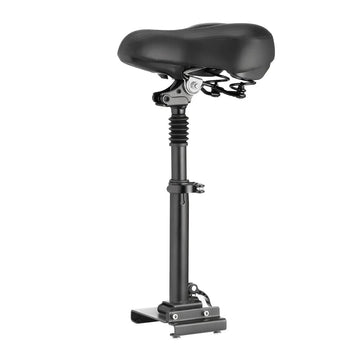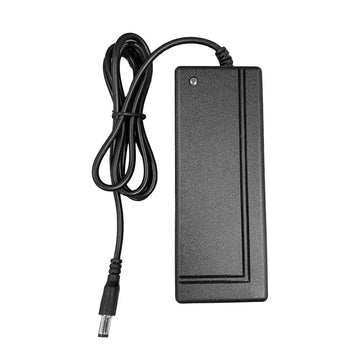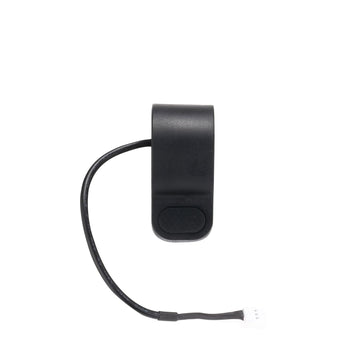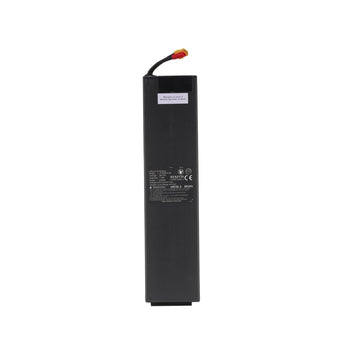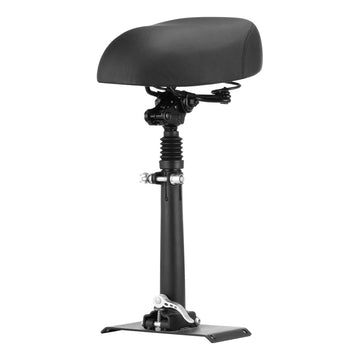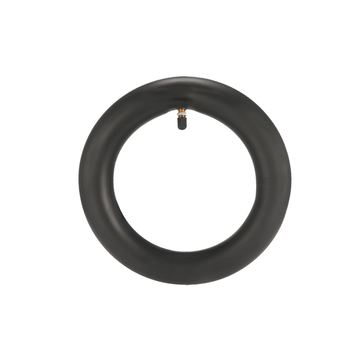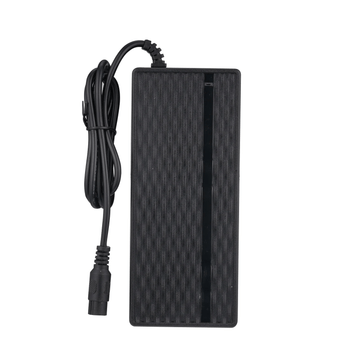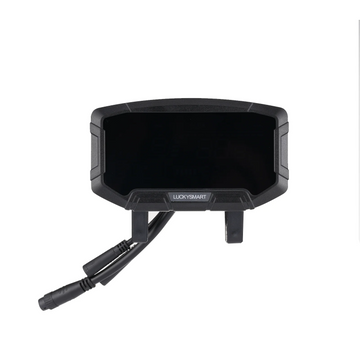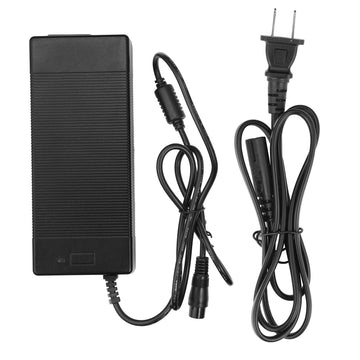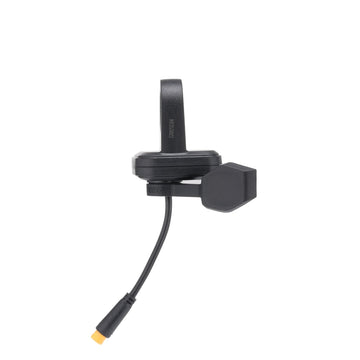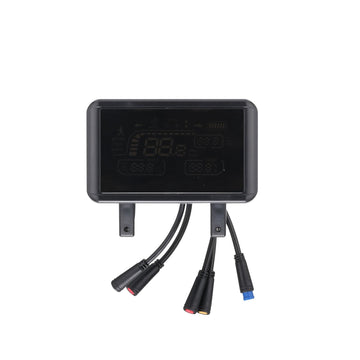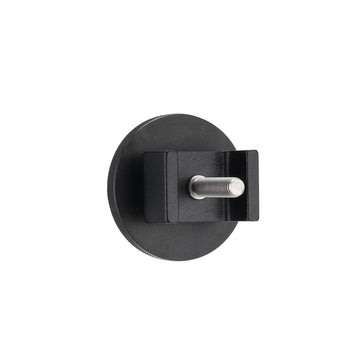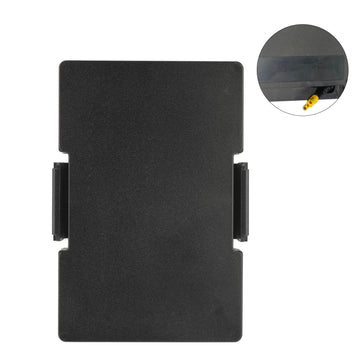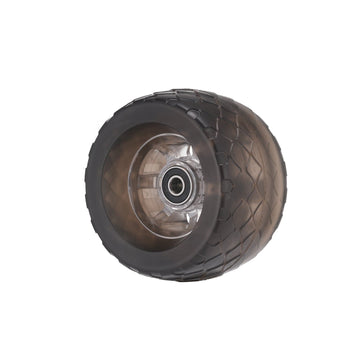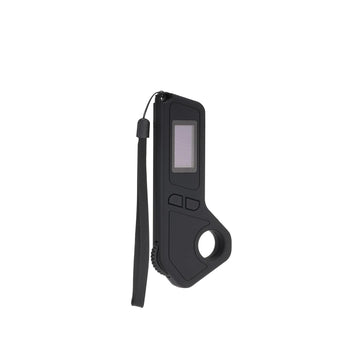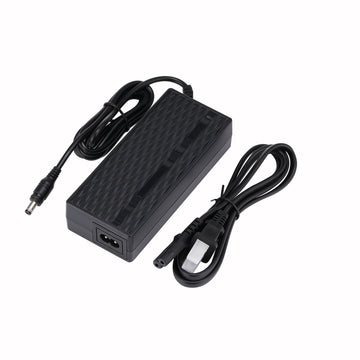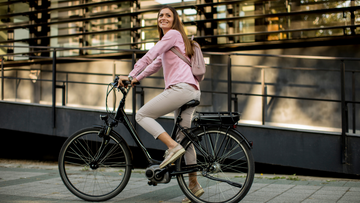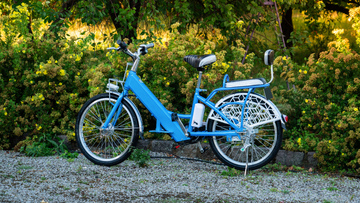
Proper bike tire pressure is important for optimal performance, safety, and riding comfort. Whether you are a professional cyclist or a casual rider, having the correct tire pressure can significantly impact your overall experience. This guide will cover all aspects of bike tire pressure, including what it is, why it matters, and how to determine the correct pressure for your bike.
Bike tire pressure is measured in PSI (pounds per square inch) or bar, and it refers to the amount of air pressure inside your tires. The correct tire pressure varies depending on factors such as your weight, the type of bike you have, the type of terrain you will be riding on, and the weather conditions. Riding with incorrect tire pressure can result in poor performance, increased risk of accidents, and discomfort.
In this guide, we will provide you with all the information you need to determine the correct bike tire pressure for your specific needs. We will cover how to check your tire pressure, how to adjust it, and what to do if you encounter any issues. By following these guidelines, you can ensure that your bike is always performing at its best and that you are riding safely and comfortably.
Why Proper Bike Tire Pressure Matters?

Maintaining the correct tire pressure is crucial for a variety of reasons. Here are some of the most important benefits of keeping your bike tires inflated to the right pressure:
1. Improved riding efficiency
One of the most significant benefits of proper tire pressure is improved riding efficiency. When your tires are at the correct pressure, they will roll more easily and with less resistance. This means you will be able to ride faster and cover more ground with less effort.
2. Reduced risk of flats
Another important reason to maintain the correct tire pressure is to reduce the risk of flats. When your tires are underinflated, they are more susceptible to punctures and pinch flats. On the other hand, overinflated tires are more likely to blow out or suffer from sidewall damage. By keeping your tires inflated to the recommended pressure, you can significantly reduce your risk of getting a flat.
3. Better handling
Proper tire pressure also plays a crucial role in how your bike handles. When your tires are underinflated, they will feel sluggish and unresponsive. This can make it more challenging to control your bike, especially when cornering or navigating technical terrain.
Overinflated tires, on the other hand, can make your bike feel twitchy and unstable. By maintaining the correct tire pressure, you can ensure that your bike handles predictably and responsively in all conditions.
How to Find the Recommended Tire Pressure for Your Bike?
Finding the right tire pressure for your bike is crucial for a smooth and safe ride. The recommended tire pressure varies depending on the type of bike, the tire size, and the rider's weight. Here are a few steps to help you find the recommended tire pressure for your bike.
-
Check the tire sidewall: Every tire has a recommended pressure range printed on the sidewall. Look for the PSI (pounds per square inch) or BAR (atmospheric pressure) rating. This rating indicates the minimum and maximum tire pressure range. Always inflate the tire within this range.
-
Consider the bike type: Different types of bikes require different tire pressures. Road bikes typically require higher tire pressure than mountain bikes or hybrids. The recommended tire pressure for a road bike ranges from 80 to 130 PSI, while for a mountain bike, it ranges from 30 to 50 PSI. For hybrids, the recommended tire pressure is usually between 50 to 70 PSI.
-
Follow manufacturer recommendations: The bike manufacturer also provides a recommended tire pressure range. This information can be found in the owner's manual or on the manufacturer's website. Always follow the manufacturer's recommendations to ensure the best performance and safety.
-
Adjust for rider weight: The rider's weight also affects the recommended tire pressure. Heavier riders require higher tire pressure than lighter riders. As a general rule, add 1 PSI for every 10 pounds of rider weight.
-
Experiment: The recommended tire pressure is a starting point. You may find that slightly higher or lower tire pressure works better for you. Experiment with different pressures to find the sweet spot for your riding style and terrain.
Understanding Bike Tire Pressure

Fundamentals of Bike Tire Pressure
One of the most important factors in bike performance and safety is tire pressure. Proper tire pressure ensures efficient and comfortable rides while reducing the risk of flats and other tire-related issues. Tire pressure refers to the amount of air inside the tire, measured in pounds per square inch (PSI) or bars.
Units of Measurement: PSI and Bar
PSI and bar are the two most common units of measurement for tire pressure. PSI is used primarily in the United States, while the bar is used in most other countries. It's important to note that the two units are not interchangeable, so it's crucial to use the correct unit of measurement when inflating your tires.
Tire Pressure and Riding Comfort
Tire pressure plays a significant role in your riding comfort. If your tires are overinflated, you'll feel every bump and vibration in the road, which can be uncomfortable and even painful. On the other hand, if your tires are underinflated, you'll experience a bouncy ride, which can be inefficient and also cause discomfort.
To find the optimal tire pressure for your bike, you should refer to the manufacturer's recommendations, which are usually printed on the tire sidewall.
Important Note 💡:
Keep in mind that the optimal tire pressure may vary depending on your weight, riding style, and the terrain you'll be riding on.
For example, if you're carrying heavy loads or riding on rough terrain, you may need to increase your tire pressure to compensate for the additional weight and shock absorption.
Tire Types and Pressure Considerations

When it comes to bike tire pressure, there are several factors to consider. In this section, we'll explore the different types of tires and how they affect tire pressure.
Tube vs. Tubeless Tires
One of the biggest decisions you'll need to make when it comes to bike tires is whether to use tube or tubeless tires.
Tubeless tires have become increasingly popular in recent years due to their ability to reduce the risk of punctures and improve overall performance.
With tubeless tires, you don't need an inner tube, which means you can run lower tire pressures without the risk of pinch flats. This can provide a smoother ride and improved traction, particularly when riding off-road.
If you're using traditional tube tires, you'll need to be more cautious with your tire pressure. Running too low a pressure can increase the risk of pinch flats while running too high a pressure can lead to a harsh ride and reduced traction. As a general rule, road bike tires require higher pressure than mountain bike or gravel bike tires.
Road, Mountain, and Gravel Bike Tires Pressure Guide
Different types of bikes require different tire pressures.
Road bike tires are typically narrower and require higher pressure to reduce rolling resistance and increase speed.
Mountain bike tires, on the other hand, are wider and require lower pressure to improve traction and absorb shock.
Gravel bike tires fall somewhere in between, with a wider tire than a road bike but narrower than a mountain bike.
As a general rule, road bike tires require a pressure range of 80-120 PSI, while mountain bike tires require a pressure range of 30-50 PSI. Gravel bike tires typically fall somewhere in between, with a pressure range of 50-70 PSI.
Impact of Tire Width on Pressure
The width of your bike tires also plays a role in determining the ideal tire pressure. Wider tires can be run at lower pressures, which can provide a smoother ride and improved traction.
However, if you run your tires too low, you increase the risk of pinch flats and reduce the efficiency of your ride.
As a general rule, wider tires require lower pressure than narrower tires. For example, if you're riding a mountain bike with 2.1" tires, you'll want to run a pressure range of 18-26 PSI.
If you're riding a mountain bike with 2.25" tires, you'll want to run a pressure range of 17-25 PSI. For wider tires such as 2.5", you can drop the tire pressure down to 20-21 PSI.
How to Check and Adjust Bike Tire Pressure?

Keeping your bike tires properly inflated is critical for safe and efficient riding. In this section, we will guide you through the process of checking and adjusting your bike tire pressure using different types of pumps and gauges. We will also provide tips for maintaining consistent pressure.
How to Use a Tire Pressure Gauge
- First, remove the valve cap from the tire valve stem.
- Press the tire pressure gauge onto the valve stem and hold it firmly in place.
- Wait for the gauge to display a reading. If using a digital gauge, the reading will appear on the screen. For a traditional gauge, the needle will move to indicate the pressure.
- If the reading is too low, add air to the tire. If the reading is too high, release air from the tire.
Setting the Correct Pressure
The recommended tire pressure is usually printed on the sidewall of the tire. However, this is not always the optimal pressure for your riding conditions. Factors such as rider weight, bike weight, and terrain should also be taken into account.
A general rule of thumb is to inflate road bike tires to 80-130 psi and mountain bike tires to 30-50 psi. However, this can vary depending on the factors mentioned above.
Adjusting Pressure for Riding Conditions
For optimal performance, you may need to adjust your tire pressure depending on the riding conditions.
For example, if you are riding on rough terrain, you may need to lower the pressure slightly to improve traction and absorb shocks. On the other hand, if you are riding on smooth roads, you may want to increase the pressure for better speed and efficiency.
Types of Pressure Gauges
There are several types of pressure gauges available, including digital gauges, floor pump gauges, and traditional gauges.
- Digital gauges are easy to read and often more accurate than traditional gauges.
- Floor pump gauges are built into the pump and provide a convenient way to check pressure while inflating.
- Traditional gauges are simple and reliable but can be harder to read accurately.
Choosing the Right Pump
There are several types of pumps available, including high-pressure pumps, high-volume pumps, mini pumps, and CO2 inflators.
- High-pressure pumps are designed for road bikes and can quickly inflate tires to high pressures.
- High-volume pumps are designed for mountain bikes and can quickly inflate large-volume tires.
- Mini pumps are compact and portable, making them ideal for on-the-go repairs.
- CO2 inflators are fast and convenient but require disposable cartridges.
Effects of Tire Pressure on Performance
Traction and Grip
The tire pressure you use can have a significant impact on the traction and grip of your bike. Higher tire pressure can lead to less grip, especially in wet or slippery conditions.
Conversely, lower tire pressure can improve grip, but too low of pressure can increase the risk of pinch flats. Finding the right balance between grip and avoiding flats is important.
Rolling Resistance and Speed
Tire pressure can also impact rolling resistance and speed. Higher tire pressure can lead to lower rolling resistance and faster speeds, but only up to a certain point. If the pressure is too high, rolling resistance can actually increase.
Lower tire pressure can result in higher rolling resistance and slower speeds, but can also provide a more comfortable ride.
Pressure Impact on Bike Handling
Tire pressure can also impact bike handling. Higher tire pressure can lead to a harsher ride and more stress and fatigue on your hands and arms. Lower tire pressure can provide a more comfortable ride and reduce stress and fatigue, but can also impact bike handling and stability.
Important Note 💡:
Overall, finding the right tire pressure for your bike and riding style is important to maximize performance and comfort. Experiment with different pressures to find what works best for you. Remember to always check your tire pressure regularly and adjust as needed.
The Right Tire Pressure for Different Bike Types

Finding the optimal tire pressure for your bike is crucial for a comfortable and safe ride. The ideal tire pressure varies depending on the type of bike you have, your weight, and the terrain you will be riding on.
In this section, we will discuss the recommended tire pressure for road bikes, mountain bikes, and hybrid bikes.
1. Road Bike Tire Pressure
The ideal tire pressure for road bikes depends on the rider's weight and the tire size. As a general rule, you can start with 90 psi for narrower tires (23mm) and 80 psi for wider tires (25mm), then adjust the pressure according to your weight.
For example, if you weigh less than 150 pounds, you can reduce the pressure by 5 psi, and if you weigh more than 150 pounds, you can increase it by 5 psi.
2. Mountain Bike Tire Pressure
The optimal tire pressure for mountain bikes varies depending on the type of terrain you will be riding on. For off-road riding, you can reduce the pressure to increase traction, while for on-road riding, you can increase the pressure to reduce rolling resistance.
As a general rule, you can start with 30 psi for off-road riding and 50 psi for on-road riding. However, you should adjust the pressure according to your weight and the type of terrain you will be riding on.
Check out our collection of Off Road Electric Bikes.
3. Hybrid Bike Tire Pressure
The recommended tire pressure for hybrid bikes is similar to that of road bikes. You can start with 80 psi for narrower tires (28mm) and 70 psi for wider tires (32mm), then adjust the pressure according to your weight.
If you weigh less than 150 pounds, you can reduce the pressure by 5 psi, and if you weigh more than 150 pounds, you can increase it by 5 psi.
4. Other Types of Bicycles: Touring Bikes
The optimal tire pressure for other types of bicycles, such as touring bikes, depends on the type of terrain you will be riding on and your weight.
As a general rule, you can start with the recommended pressure for road bikes and adjust it according to your weight and the type of terrain you will be riding on.
Check out our collection of City Electric Bike
Tools and Equipment for Maintaining Tire Pressure
Maintaining proper tire pressure is crucial for the performance and safety of your bike. To ensure that your tires are inflated to the correct pressure, you will need a few essential tools and equipment.
Here are some of the items you should consider having in your toolkit:
1. Floor Pump
A floor pump is a must-have tool for maintaining proper tire pressure. It is a large pump that allows you to quickly and easily inflate your tires to the desired pressure. Floor pumps typically have a built-in pressure gauge, which makes it easy to monitor the pressure as you inflate the tire.
2. Mini Pump
A mini pump is a portable pump that you can carry with you on your rides. It is smaller and lighter than a floor pump and is designed to be easily carried in a backpack or attached to your bike frame. Mini pumps are ideal for emergencies when you need to inflate your tire on the go.
3. CO2 Inflator
A CO2 inflator is a small, lightweight device that uses compressed CO2 gas to inflate your tires. It is a quick and convenient way to inflate your tires, especially if you need to inflate them quickly. CO2 inflators are ideal for racing or time trials when you need to inflate your tires quickly and efficiently.
4. Pressure Gauge
A pressure gauge is an essential tool for maintaining proper tire pressure. It allows you to accurately measure the pressure in your tires and ensure that they are inflated to the correct level. There are several different types of pressure gauges available, including digital and analog gauges.
Conclusion
Maintaining the correct tire pressure is crucial for optimal bike performance. As discussed earlier, the recommended tire pressure varies depending on several factors, such as rider weight, bike weight, tire type, and terrain. Therefore, it is essential to regularly check and adjust your tire pressure to ensure a smooth and safe ride.
Remember, underinflated tires can cause increased rolling resistance, making it harder to pedal, while overinflated tires can lead to a harsh ride and reduced traction. Both scenarios can also increase the risk of flats and other tire-related issues.
To determine the correct tire pressure for your bike, check the recommended pressure range printed on the tire's sidewall. Use a reliable tire pressure gauge to measure the pressure accurately, and adjust it as needed.
It's also good to know that different types of bikes need different tire pressures. For example, road bikes usually need higher tire pressures than mountain bikes. So, it's important to know what your bike needs and set the pressure right. If you need bike accessories or even an electric bike, you might want to look at Isinwheel. They have a lot of choices for different biking needs.
Related Posts:
Frequently Asked Questions on Bike Tire Pressure
What is the ideal tire pressure for a road bike?
The ideal tire pressure for a road bike depends on the weight of the rider and the bike, as well as the width of the tires. As a general rule of thumb, road bike tires should be inflated to a pressure between 80 and 130 psi (pounds per square inch). However, it is important to check the manufacturer's recommendations for your specific tires.
How often should I check my bike tire pressure?
It is recommended that you check your bike tire pressure before every ride. This will ensure that your tires are properly inflated and will help prevent flats and other issues. It is also a good idea to check your tire pressure periodically during longer rides, especially if you are riding in changing weather conditions.
Can I use a car tire pump for my bike tires?
While it is possible to use a car tire pump for your bike tires, it is not recommended. Car tire pumps typically deliver a much higher volume of air than is needed for bike tires, which can cause them to overinflate and potentially burst. It is best to use a bike-specific pump or a portable air compressor designed for bike tires.
What is the air pressure for a 26 inch bike tire?
The ideal air pressure for a 26 inch bike tire will depend on the type of bike and the width of the tire. As a general rule of thumb, mountain bike tires with a width of 2.1 inches should be inflated to a pressure of 26-28 psi, while wider tires with a width of 2.5 inches can be inflated to a pressure of 20-21 psi.
Is 20 PSI good for bike?
While 20 psi may be an appropriate tire pressure for some mountain bike tires with a width of 2.5 inches, it is generally too low for most other types of bike tires. It is important to check the manufacturer's recommendations for your specific tires and to adjust the pressure based on your weight and riding conditions.
What PSI should bike tires be at?
The ideal PSI for bike tires will depend on the type of bike and the width of the tire. As a general rule of thumb, road bike tires should be inflated to a pressure between 80 and 130 psi, while mountain bike tires with a width of 2.1 inches should be inflated to a pressure of 26-28 psi. Always check the manufacturer's recommendations for your specific tires and adjust the pressure based on your weight and riding conditions.
























